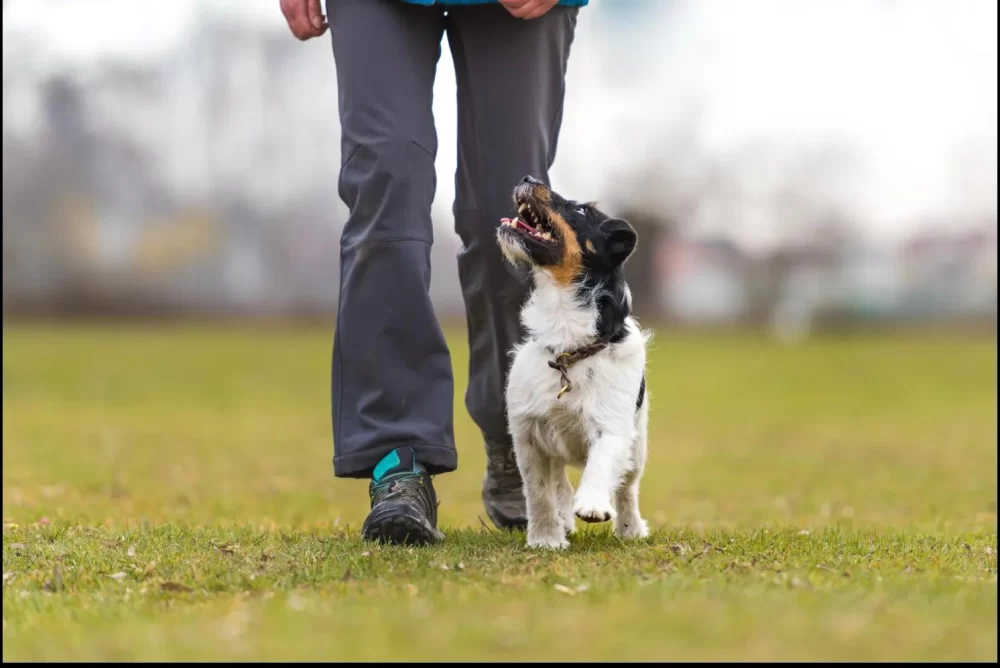- Understanding the Importance of the Heel Command
- Preparing for Heel Training
- Step-by-Step Guide to Teaching Your Dog to Heel
- Common Challenges and How to Overcome Them
- Real-Life Examples and Professional Advice
- Resources for Advanced Training and Support
1. Understanding the Importance of the Heel Command
Teaching a dog to heel is one of the foundational commands in dog training that dramatically improves both control and safety during walks. The heel command instructs your dog to walk calmly by your side without pulling ahead or lagging behind. This is especially important in busy or potentially hazardous environments where sudden distractions or traffic could pose risks to your pet.
Beyond safety, heeling builds better communication and strengthens the bond between you and your dog. Dogs that reliably heel tend to be more focused and responsive to their owners, which makes other training tasks easier. For example, a Labrador Retriever owner shared how mastering the heel command transformed her walks from chaotic tugging to relaxed strolls, making outings enjoyable for both her and her dog.
1.1 Why Heeling Matters for All Dogs
Regardless of size or breed, all dogs benefit from learning how to heel. Small breeds, large working dogs, and everything in between can display more confident and respectful behavior when they understand this command. It helps prevent pulling-related injuries to both dogs and owners and creates a calmer walking experience overall.
2. Preparing for Heel Training
Before teaching your dog to heel, preparation is key. Gathering the right tools and setting up a distraction-free environment helps establish a strong foundation for learning.
2.1 Tools You’ll Need
A standard leash about four to six feet long is ideal — not too long to lose control, but long enough to allow your dog some freedom. A comfortable, well-fitted harness or collar designed to minimize pulling is recommended. Additionally, having tasty treats or your dog’s favorite rewards will facilitate positive reinforcement, crucial to effective training.
2.2 Setting the Scene
Start in a quiet, familiar area such as your backyard or a calm park space to minimize distractions. This focused environment allows your dog to pay attention to your cues and helps you manage their behavior more effectively during initial sessions.
3. Step-by-Step Guide to Teaching Your Dog to Heel
Teaching your dog to heel requires patience and consistency. Here’s a detailed approach broken into actionable steps:
3.1 Establish the Position
Stand with your dog on your left side, both facing forward. Use a treat held near your left hip to lure your dog into position, encouraging them to stay close to your leg.
3.2 Introduce the Command
Once your dog is in position, clearly say “heel” and start walking forward slowly. Keep the treat in your hand near your side so your dog knows to maintain that spot.
3.3 Reward and Reinforce
When your dog stays at your side while walking, offer praise and treats frequently at first. Positive reinforcement motivates your dog to repeat the behavior.
3.4 Correct Gently and Redirect
If your dog pulls ahead or lags behind, calmly stop walking and use the leash to guide them back into the heel position. Avoid harsh corrections; instead, redirect with patience and treats.
3.5 Increase Duration and Distraction Gradually
As your dog improves, extend the walking time while maintaining the heel and slowly introduce mild distractions like noises or other people. This builds your dog’s focus and reliability in various environments.
4. Common Challenges and How to Overcome Them
Many dog owners encounter hurdles during heel training, but these can be managed with the right mindset and techniques.
4.1 Dog Pulling or Lunging
Pulling often stems from excitement or curiosity. To counter this, stop immediately when pulling occurs. Only move forward again when the leash slackens and your dog returns to your side. Consistency with this approach teaches dogs that pulling delays their walk.
4.2 Distractions and Loss of Focus
Dogs can easily get distracted by smells, noises, or other animals. Keeping training sessions short and gradually increasing exposure to distractions helps build their focus over time. Reward calm attention and ignore pulling caused by excitement.
4.3 Impatience or Frustration
Training can be frustrating for both dog and owner. Keeping sessions positive and ending on a good note, even if brief, encourages your dog to stay engaged. Remember, patience is key to long-term success.
5. Real-Life Examples and Professional Advice
One memorable story shared by a client at Hidden Brook Veterinary involved a young Border Collie named Max. Max was energetic and loved to pull during walks, making outings stressful for his owner. After a structured training plan focused on the heel command using positive reinforcement, Max’s behavior improved significantly within weeks. His owner praised the patience and tailored advice from Hidden Brook Veterinary, which made the process smooth and rewarding.
Veterinarians and dog behaviorists at Hidden Brook Veterinary emphasize that teaching a dog to heel isn’t just about control; it’s about building mutual trust and understanding. They recommend professional guidance for dogs with behavioral challenges or high energy levels to ensure effective and safe training.
5.1 Why Seek Expert Help?
Expert trainers can observe subtle cues you might miss and tailor training methods to your dog’s personality. At Hidden Brook Veterinary, you can access personalized training support and the best equipment to help your dog learn the heel command efficiently.
6. Resources for Advanced Training and Support
Once your dog masters basic heeling, you might want to explore advanced obedience training or tricks. Books, online courses, and local dog training clubs provide excellent avenues for growth. Additionally, Hidden Brook Veterinary offers a range of resources and products designed to support continued training success and overall canine well-being.
With commitment, the right techniques, and some expert support, teaching your dog to heel can become an enjoyable and rewarding experience for both of you.











